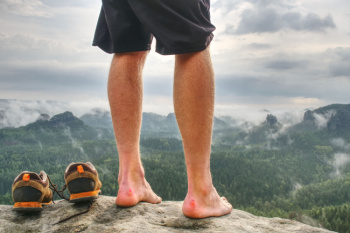
Foot blisters are uncomfortable and often arise from a variety of common causes. Friction stands as a primary instigator, occurring when shoes or socks rub against the skin, particularly during vigorous physical activities or prolonged periods of standing or walking. Wearing ill-fitting footwear worsens this friction, creating hot spots that gradually develop into blisters. Moisture, another adversary, softens the skin, making it more susceptible to friction-induced damage. Wet conditions, sweaty feet, or improperly dried footwear create an ideal environment for blister formation. Furthermore, heat plays a significant role, as excessive warmth can increase friction and moisture levels, intensifying blister formation. Conversely, extreme cold can also contribute, causing skin to become brittle and more prone to friction injuries. Foot blisters can become infected if not promptly treated. If you have a bothersome blister, it is suggested that you visit a podiatrist who can treat it and offer additional prevention methods.
Blisters are prone to making everyday activities extremely uncomfortable. If your feet are hurting, contact one of our podiatrists of New York, NY. Our doctors can provide the care you need to keep you pain-free and on your feet.
Foot Blisters
Foot blisters develop as a result of constantly wearing tight or ill-fitting footwear. This happens due to the constant rubbing from the shoe, which can often lead to pain.
What Are Foot Blisters?
A foot blister is a small fluid-filled pocket that forms on the upper-most layer of the skin. Blisters are filled with clear fluid and can lead to blood drainage or pus if the area becomes infected.
How Do Blisters Form?
Blisters on the feet are often the result of constant friction of skin and material, usually by shoe rubbing. Walking in sandals, boots, or shoes that don’t fit properly for long periods of time can result in a blister. Having consistent foot moisture and humidity can easily lead to blister formation.
Prevention & Treatment
It is important to properly care for the affected area in order to prevent infection and ease the pain. Do not lance the blister and use a Band-Aid to provide pain relief. Also, be sure to keep your feet dry and wear proper fitting shoes. If you see blood or pus in a blister, seek assistance from a podiatrist.
If you have any questions, please feel free to contact our office located in New York, NY . We offer the newest diagnostic and treatment technologies for all your foot care needs.

